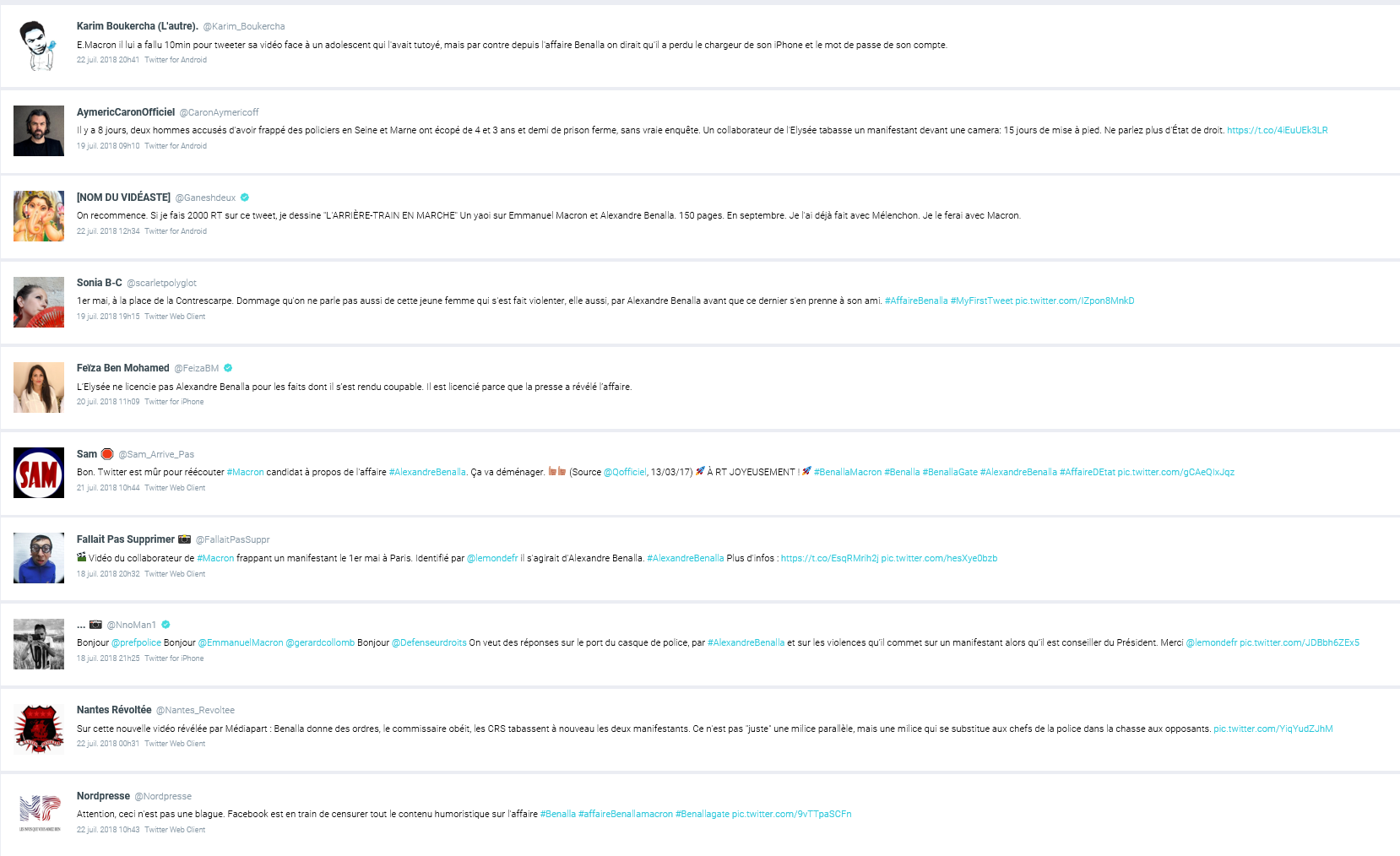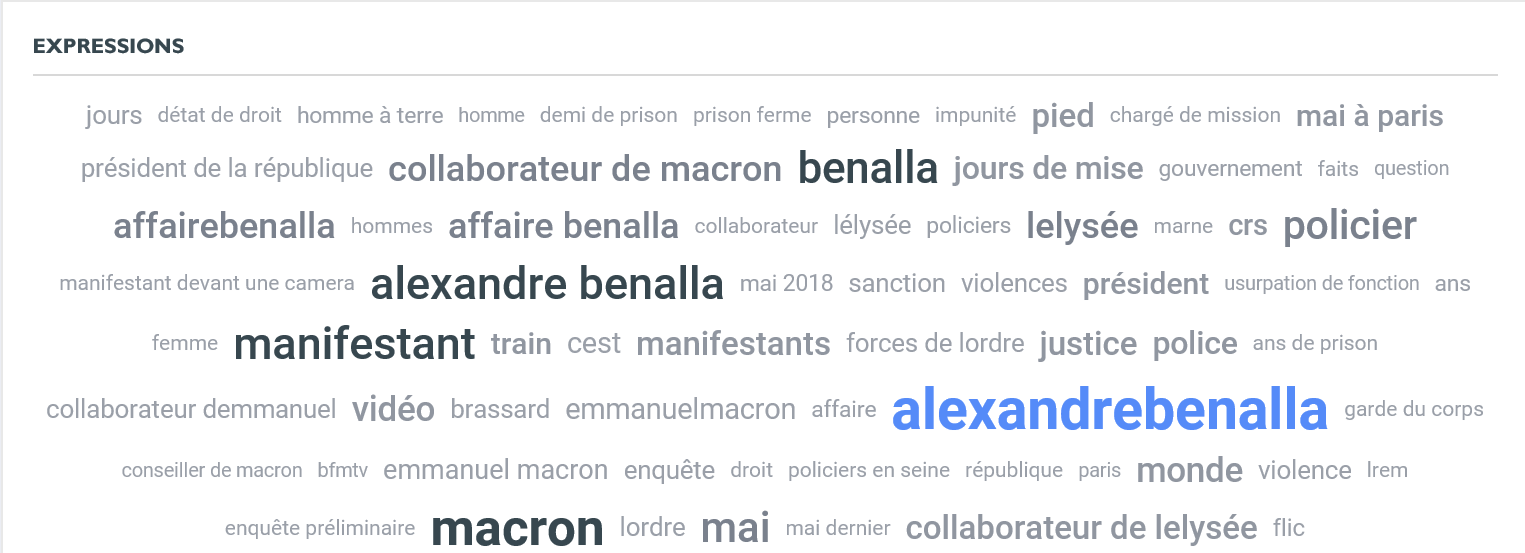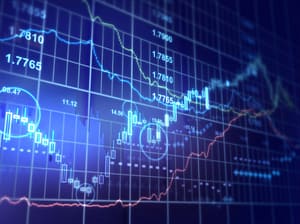Sommaire
Benalla Affair on Social Media: The Resurgence of Opposition Parties

I. Insights
1. Crisis communication: A discipline easy to comment on from the outside
As is customary, the crisis communication angle was tackled by continuous news channels. Unsurprisingly, the communication approach was criticized, especially the poorly recorded video by Bruno Roger Petit. He was clearly sent to take the fall, without it being entirely useful.
Sacrificed, yes, but for what gain?
That being said, it would be easy to comment on crisis communication solely based on its external aspect. The one who truly has control is the one managing the crisis, with the first priority being to determine what they're willing to sacrifice. The choice of sacrifice here was clearly poorly identified. They were thrust into an arena where time and, more importantly, information were lacking. Even if the government had communicated the immediate dismissal, many weaknesses would have remained to prolong the crisis:
- His privileged status and ambiguous role
- His appointments and privileges
- The Élysée's knowledge of the facts and its tolerance
- The information he holds that could leak if he were "thrown under the bus"
- etc.
The Impossibility of Taking Stock to Break the Cycle
In a crisis sequence, the level of urgency and importance is determined by the flow of new information, as this feeds the cycle:- New Information: Brings fresh elements to the public
- Analysis: This information is then analyzed through different lenses: its influence on the present, past, and future; political context; communication aspects.
- Comments: Politicians and the opposition comment on this new information.
The Difficulty of Internal Communication
This evolving cycle of new elements creates a global uncertainty within the organization, making it difficult to take a position due to a lack of information. Any statement made could be contradicted by a newly available piece of information. These elements succeeded each other, creating informational uncertainty, perfectly illustrated by this closed-door meeting: https://twitter.com/InTheSmok/status/1019989352162693120 As a result, informing too many people is impossible during a moment when everything is focused on damage control.What About Macron?
There remains the criticism of Macron’s silence. The communication of a CEO/President/Leader is a weapon with only one shot. Once such a statement is made, it cannot be reused without falling into quicksand. (Recall the Léonarda sequence for reference.) Macron will speak publicly when all assets are secured, and the information provided should cover the entire controversy. It’s highly likely that this weekend was used to gather all these elements, define the talking points, and prepare a swift counterattack.2. Suspicious accounts?
A certain number of far-right profiles seem dubious, to say the least. Indeed, their activity accumulates several hundred tweets on the topic, reaching over 1,000 tweets about the controversy: That said, there are also suspicious initiatives from the La République en Marche side. For instance, "Alain Grand Bernard," described as an "attentive citizen," appears like a fake account, akin to a Russian account with generic first and last names. He was one of the few to speak out early on during the crisis when information was scarce.
That said, there are also suspicious initiatives from the La République en Marche side. For instance, "Alain Grand Bernard," described as an "attentive citizen," appears like a fake account, akin to a Russian account with generic first and last names. He was one of the few to speak out early on during the crisis when information was scarce.
 Upon further search, I realized he had already been outed by Agoravox here: https://www.agoravox.fr/actualites/politique/article/alain-grand-bernard-le-faux-compte-205485
Behind this, there is a whole series of profiles, either part of the LREM circle of influence or with many generic accounts, having random usernames and profile pictures.
It is quite plausible that there was a minor influence action from the LREM response team. However, this response was entirely ineffective given the complete absence of a Macron/LREM community within the conversations.
Upon further search, I realized he had already been outed by Agoravox here: https://www.agoravox.fr/actualites/politique/article/alain-grand-bernard-le-faux-compte-205485
Behind this, there is a whole series of profiles, either part of the LREM circle of influence or with many generic accounts, having random usernames and profile pictures.
It is quite plausible that there was a minor influence action from the LREM response team. However, this response was entirely ineffective given the complete absence of a Macron/LREM community within the conversations.
3. The resurrection of the opposition
On this topic, we see that the three opposition axes are present to comment on the affair. Moreover, by 11 PM, most of the accounts that would later comment on the affair were already there. The increase is almost negligible, and additional communities are capitalized by actors outside the political sphere.II. Analysis
1. Twitter timeline of events
[video width="1920" height="1080" mp4="https://www.reputatiolab.com/wp-content/uploads/2018/07/Benalla.mp4"][/video]2. The life cycle curve
 The volume of tweets exchanged is simply gigantic, with 1.5 million tweets in less than a week. For comparison, hashtags like #MeeToo, #BalanceTonPorc, and #JeSuisCharlie had lower volumes, especially considering that the captured tweets are only those written in French..
The volume of tweets exchanged is simply gigantic, with 1.5 million tweets in less than a week. For comparison, hashtags like #MeeToo, #BalanceTonPorc, and #JeSuisCharlie had lower volumes, especially considering that the captured tweets are only those written in French..
3. Semantic analysis
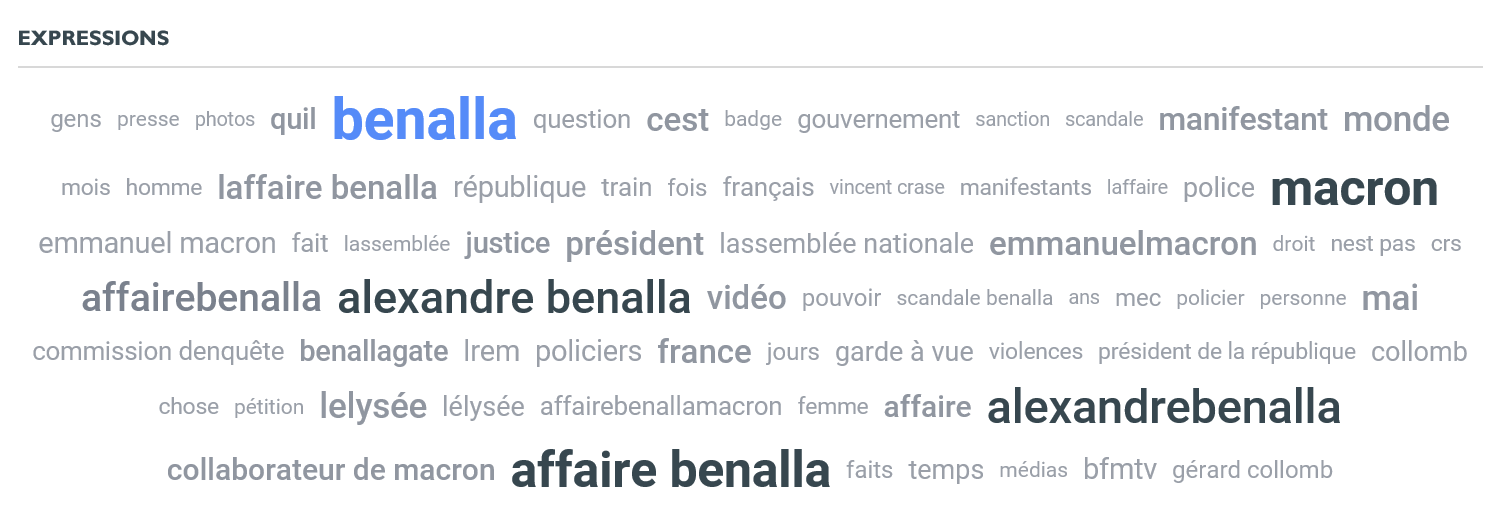 There is a rather cold treatment of expressions, mainly focused on the information itself. This is logical, as without retweets, there is an overrepresentation of media and journalists. Regarding the hashtags:
There is a rather cold treatment of expressions, mainly focused on the information itself. This is logical, as without retweets, there is an overrepresentation of media and journalists. Regarding the hashtags:
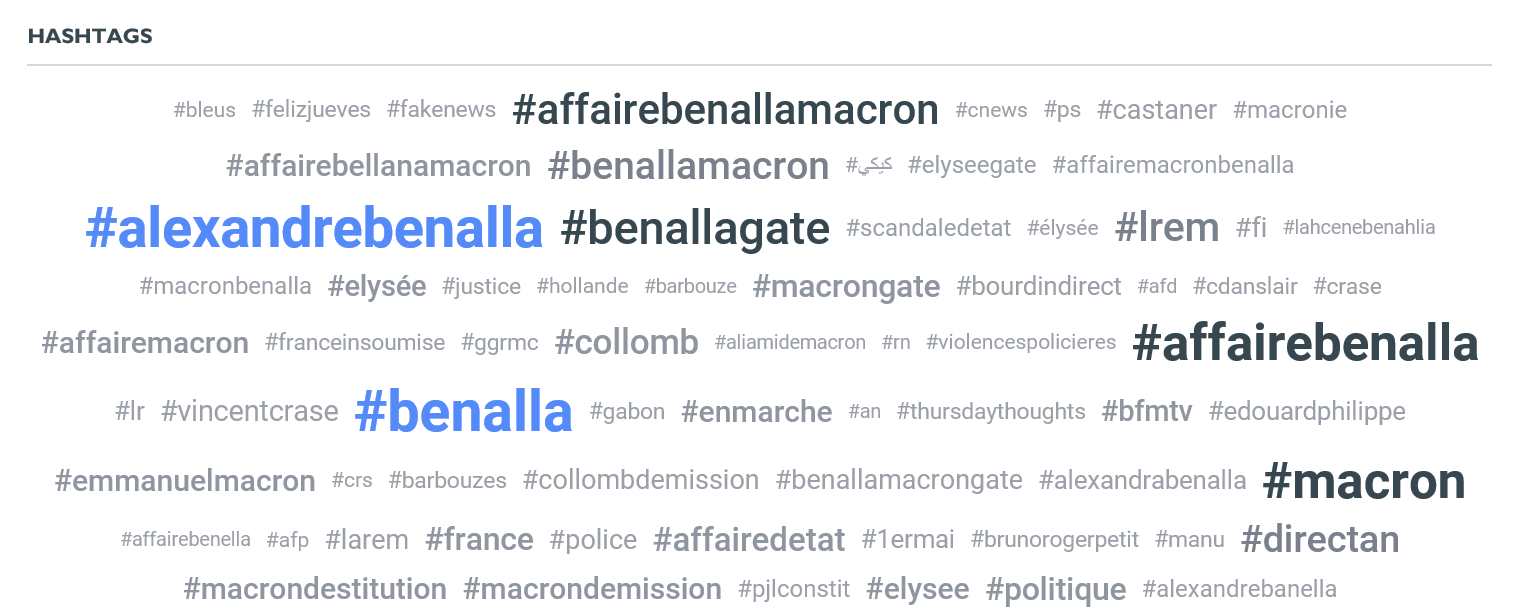 In the hashtags, we see more activism with calls for resignation, and the usual "gate" suffix.
In the hashtags, we see more activism with calls for resignation, and the usual "gate" suffix.
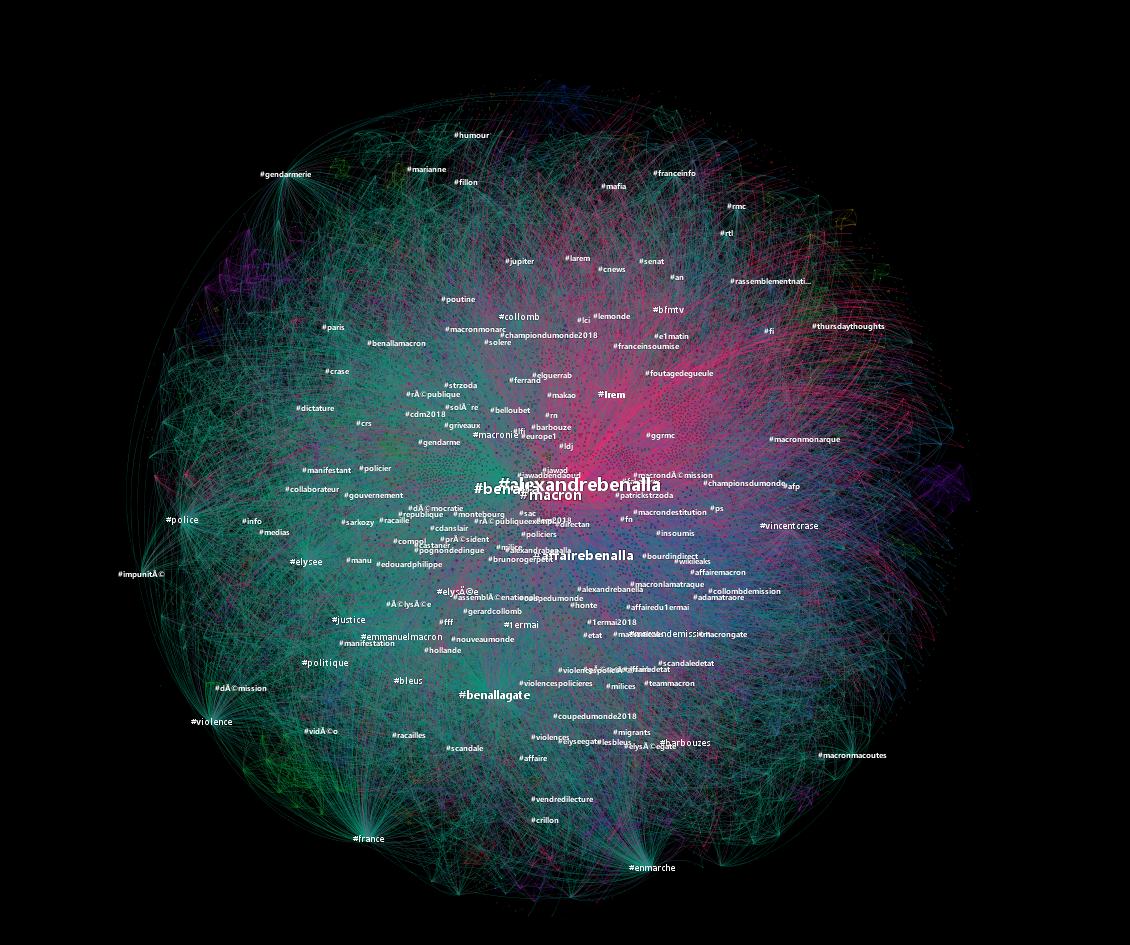
4. Community mapping
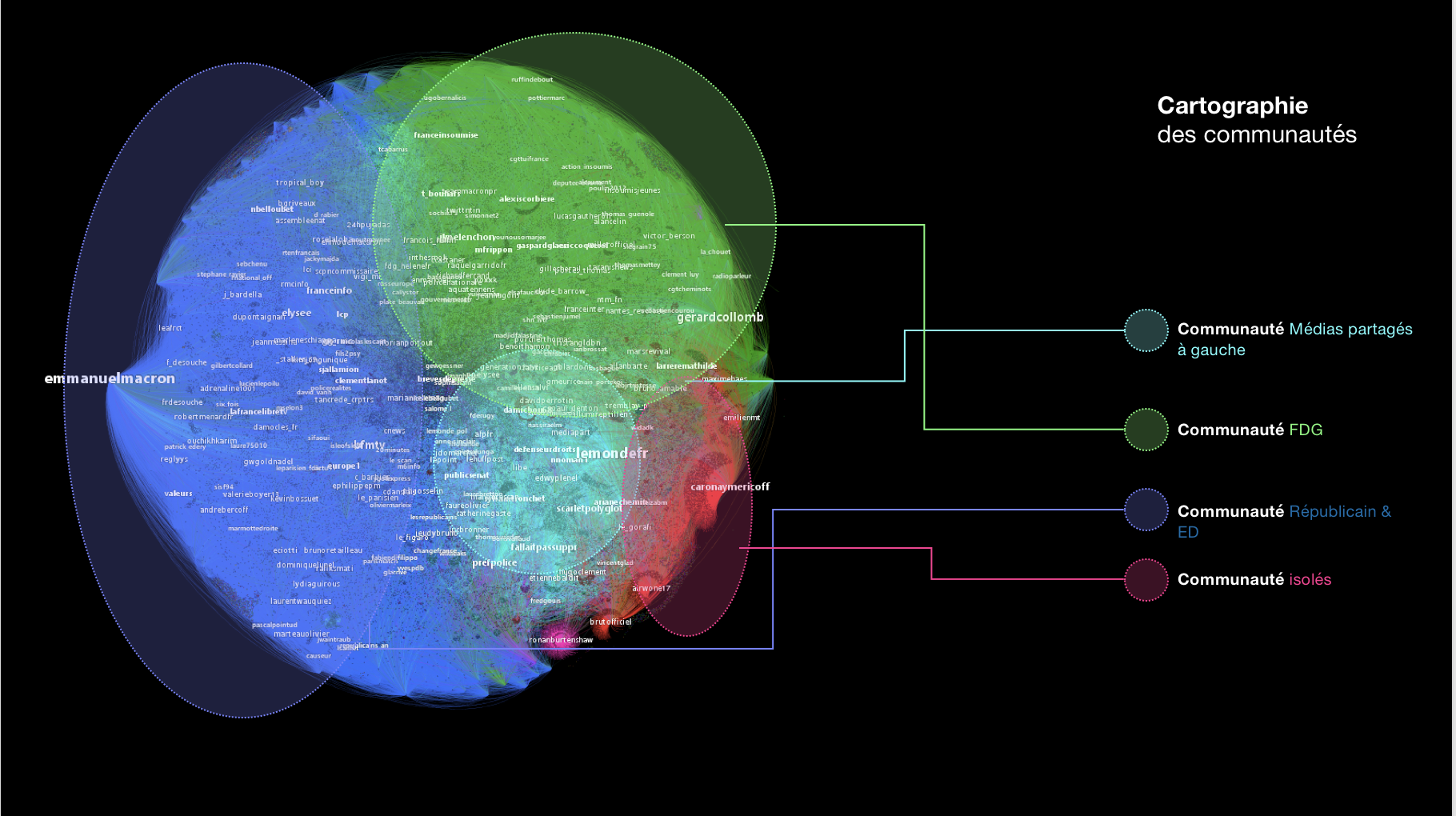 Four communities are identified:
Four communities are identified:
- one around the right-wing, republicans, and the far-right. (The more leftward on the map, the closer to the far-right community; at the bottom, it's more republican, and above are traditional media sources);
- one around La France Insoumise, targeting Gérard Collomb in particular;
- a media community, more popular among left-leaning individuals;
- and finally, a community of isolated individuals whose tweets broadened the audience.
4. Top tweets
